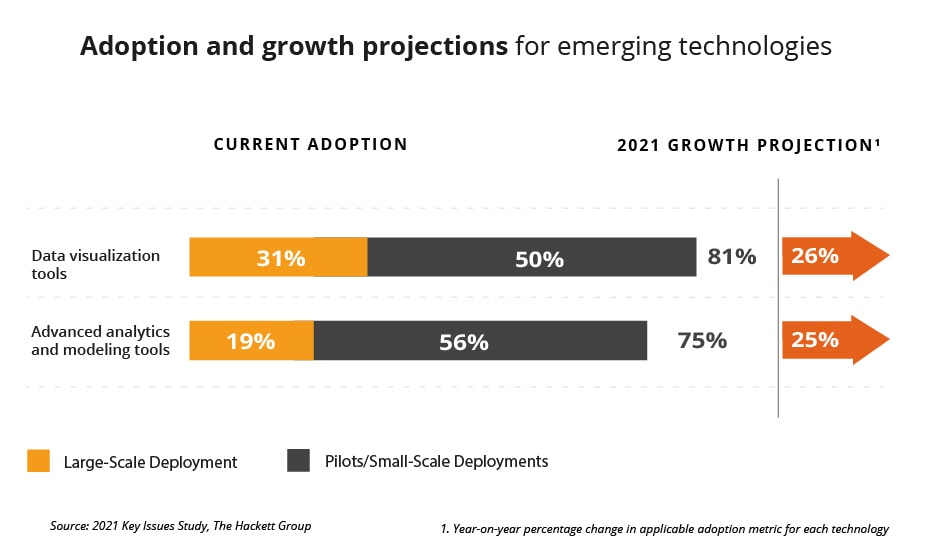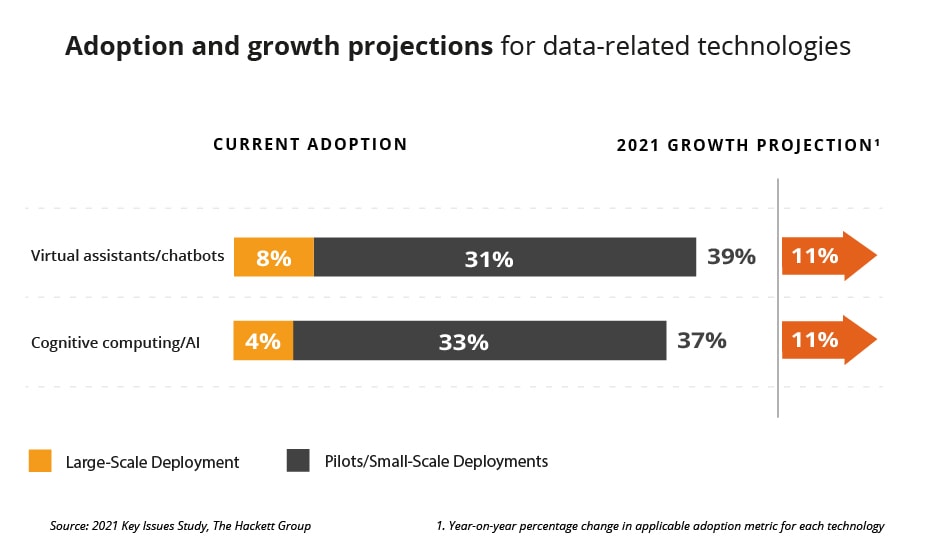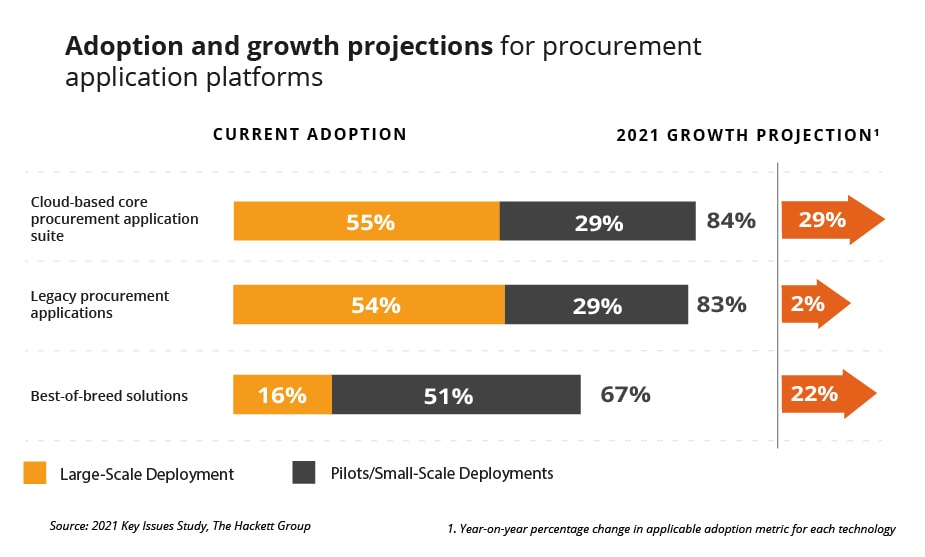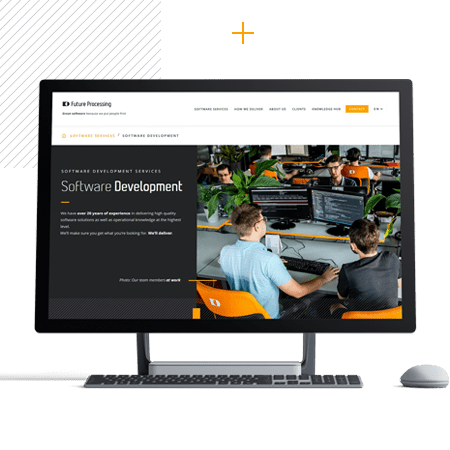
Procurement opportunities for 2022 and further
The whole supply chain moves towards digital. Last year’s events only sped up the inevitable changes. As the data shows, most companies, even pre-pandemic, knew that procurement was the area to invest in and digitalise to thrive. In the following years, technology will play an essential part in this field. Let’s see what’s going to happen next.
In the article, we talk about:
- Procurement as a promising corporate function;
- The pre-pandemic and current state of mind among companies;
- 10 key procurement issues and opportunities in 2021;
- Top tech predictions for 2022 and further.
Procurement as a promising corporate function
To understand the whole issue better, let’s start with what procurement refers to:
The Hackett Group’s 2021 Key Issues Study shows that spending cost reduction is at the top of the procurement agenda in 2021. But is it any wonder that companies are looking for savings after the extremely demanding year 2020? The global pandemic, economic disruption, major transportation difficulties and rapid movement towards online business possibilities – to name but a few of the challenges.
In such uncertain times where the business landscape changes dynamically, enterprise stability, spend cost reduction and supply assurance is what matters most. To fulfil the growing needs, companies choose tech solutions that will be popularised in the market in the following years.
Top procurement tech trends
Procurement technologies have advanced rapidly in the past years. According to the latest market report, the Global Procurement Software Market was valued at 4.7 billion USD in 2019. It is expected to grow at a healthy CAGR of 10.17% to reach 10.2 billion USD by 2027.3
Among top technologies to use in procurement are:
- Cloud Solutions
- AI & Data Analytics
- Mobile Solutions
- Self Service
- Resilient Supply Chain
As E&Y’s specialists predict, integrated data ecosystems, blockchain, voice-activated and bot-purchasing experiences, robotic process automation or machines that clean and curate data independently will play an important part in the future of procurement.
Useful tools for procurement
While thinking about the broader topic of tech trends, it is worth to focus attention on tools which might be helpful in the day-to-day work of a procurement professional. And we don’t mean the software and systems, but rather some handy templates which could make your life easier. For example a handy RFP template for purchasing software development services, a vendor selection and evaluation tool for procurement , or a DDQ template for software development outsourcing. It’s worth having tools like these in your toolbox.
Pre-pandemic VS current state of mind
In the area of supply chain there were always 3 measures of success: productivity, quality and service. Digital transformation made the supply chain a critical function for companies to realise their business aspirations and is a competitive tool to use in the modern, digital economy. Advanced supply chain possibilities support modern businesses to become more effective and ready to use dynamic changes smartly. Covid-19 pandemic only fast-forwarded that process.
According to the Finance Online portal pre-pandemic, 57% of companies believed that supply chain management gives them a competitive edge that enables them to further develop their business.
The top priorities among supply chain organisations in 2018 was improving service quality, focusing on performance management, and investing in data analytics.
Regardless of the pandemic, the global supply chain management market is set to grow at a CAGR of 11.2% from 2020 to 2027. The market is poised to reach $37.41 billion in 2020.
Key issues in 2021
As the authors of The Hackett Group’s 2021 Key Issues Study point out, there are 10 important procurement issues that need certain changes and solutions in the near future.
1: Reduced spend costs
It’s a top priority for organisations for now and the future. After the 2020 turbulence, maximising savings is extremely important as the world still experiences some instability. Spending cost reduction can be done with effective digital tools and right business partnerships. Specialised technologies can elevate the strategic sourcing process to reveal new sources of information to widen possibilities.
2: Reduce supply, endure continuity
Supply assurance became a serious topic in 2020. In 2021, procurement must continue to invest and reinforce third-party risk management. Companies can enhance and accelerate the capabilities of their risk management programmes. Using real-time data to monitor risks across a broader set of risks exposures in the whole process helps to make the right choices and act as soon as something seems to go wrong. Proper digital tools help maximise visibility throughout the supply chain and use market intelligence data from multiple internal and external sources.
3: Become a strategic advisor
A strong relationship with the business enables early involvement with more excellent spend influence. Trusted advisors make a great effort to deliver consistency, agile behaviour and deep knowledge of the business and supply market. Collaborative, proactive partnership with stakeholders leads to success. Business partners will become strategic procurement leaders aligned to key stakeholders and business delivery points to maximise a procurement-business partnership.
4: Accelerate digital transformation
Last year sped up the adoption of new tech tools. In the future, it’s a broader implementation of modern enabling tools that will boost businesses. Artificial Intelligence (AI), machine learning, advanced analytics and smart automation need to be scaled up to the global situation. Data visualisation tools, chatbots or natural language recognition are becoming more and more useful in more data-oriented procurement.
5: Improve agility
Becoming an agile enterprise means developing agile behaviour at the functional level. Procurement agility is critical for success. Some agility capabilities are broadly applicable in almost every company, like transitioning orders quickly to back-up suppliers, mitigating external risk factors, preparing for merger and acquisition activity, or preparing for other supply chain risks and disruptions on an ongoing basis.
6: Modernise platforms
Improved agility, customer-centric processes, user-friendly interfaces and cost efficiency – these are the most significant benefits of modernising (consolidating, upgrading and migrating) technology. These tools will enable agile behaviour and free up time for strategic work.
7: Align talent with changing business needs
Top talents pay off in the long run and organisations understand the need for leveraging cross-training and investing in developing talent. Procurement will need to update soft skills (e.g., strategic thinking and business acumen) and hard skills (e.g., analytic decision-making and technology savviness). Organisations also need to adapt teams to become global or agile and ensure employees have the tools to succeed in new environments.
8: Improve analytical and reporting capabilities
The potential of analytics is constantly growing. Leveraging external data, optimising dashboards and adopting predictive and smart analytics are becoming priorities. As most companies want to develop data, insight and analytics capabilities, setting up a strong master data management programme should be the first step. Procurement specialists with strong analytical skills should be provided with modern digital tools. Developing analytical skills (both internally and externally) is crucial for strategic decisions, predictive insights and agile behaviour.
9: Set corporate sustainability goals
In 2021 CSR gains greater importance in many companies. Sustainable procurement, as one of the business’ social responsible actions, can have a huge impact. Sustainability initiatives generate value through reduced costs, risk management and improved brand value. Business ethics, labour and human rights as pillars of sustainable procurement address the cultural well-being of people and help the company attain more sustainable efforts and development.
10: Increase spend influence
As a constant focus of top-performing procurement organisations, spend influence is among the top measurements of procurement’s performance. It helps reduce purchasing costs, improve quality and make better strategic outcomes like product innovation. Crucial factors in spend influence are:
- Business partnership
- Customer-centricity
- Agile processes
- New solutions based on business needs (e.g. negotiations expertise or market intelligence).
10 goals for 2022 and further
What should happen to consider this year successful in a few years? As Hackett Group’s report show, 10 necessary actions need to be taken:
- Support enterprise stability by ensuring continuity of core business operations with supply assurance and spend cost reduction.
- Develop strong relationships by upgrading the role of procurement business partners to one of the business enablement leaders.
- Modernise infrastructure by accelerating migration to cloud-based applications and platforms, use tools to deliver new services in supply risk and performance effectively.
- Go digital by employing smart automation and advanced analytics to eliminate dependency on manual tasks and improve efficiency.
- Close skill gaps in stakeholder relationships, business acumen, change leadership, strategic thinking, data savviness and customer-centric design.
- Reinvent the procurement operating model to address bureaucracy, lack of collaboration and speed. Align high-level procurement business partners with business leaders.
- Improve procurement agility through simplification, empowering decision-making and calculated risk-taking, deploying flexible teams, remote working, third-party staff augmentation, digital processes, and streamlined governance.
- Enhance third-party risk management capabilities by discovering a broader range of risk exposures, going deeper into the levels of the supply chain, and continuous risk monitoring throughout the supplier life cycle.
- Develop a strong master data/ insights programme by supporting company culture. Use the right tools to improve spend insight, access required analytical skills, and deploy required internal and external intelligence sources to provide predictive alerts and additional business value.
- Gain influence by developing capabilities that respond to business needs and enable the function to influence spend across the enterprise.








